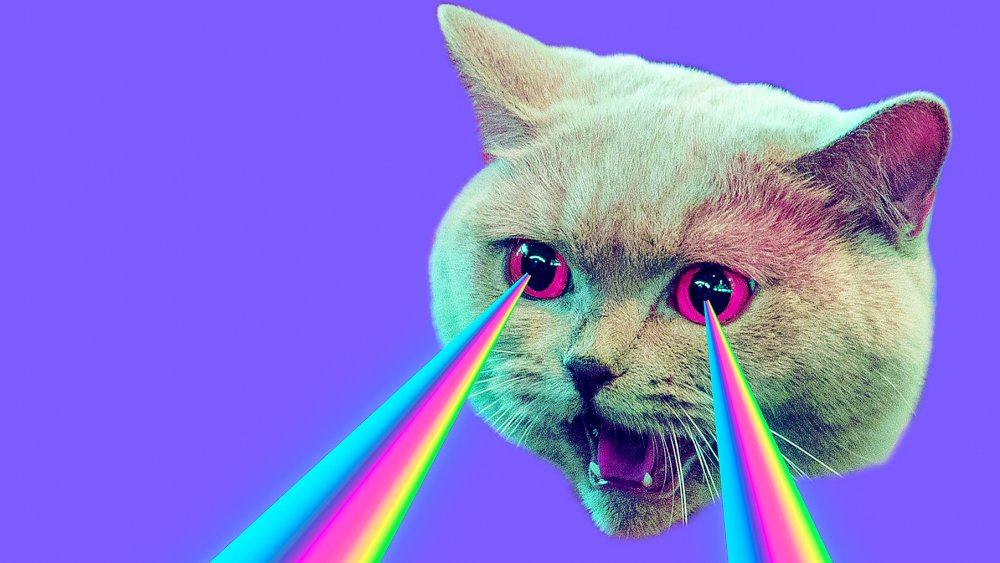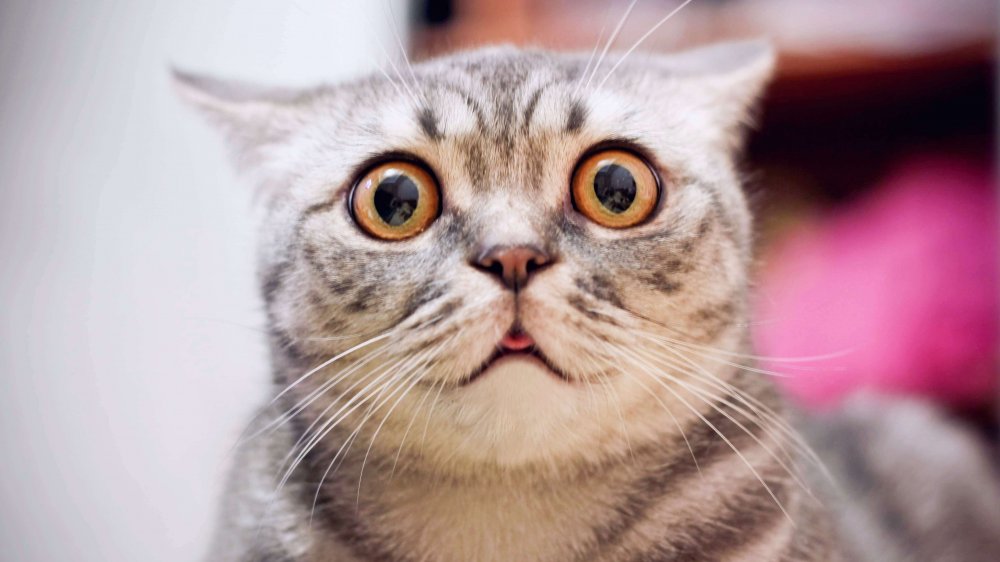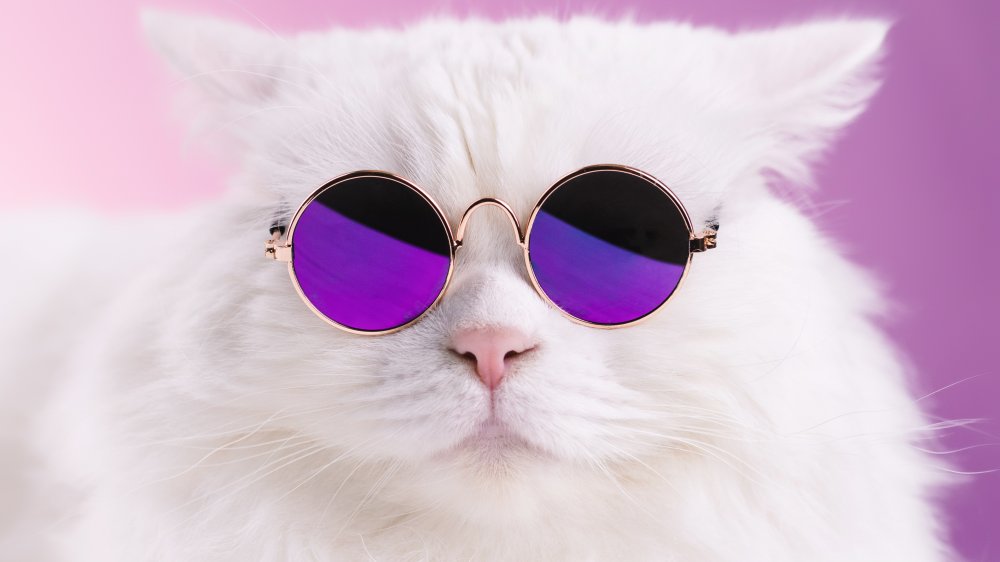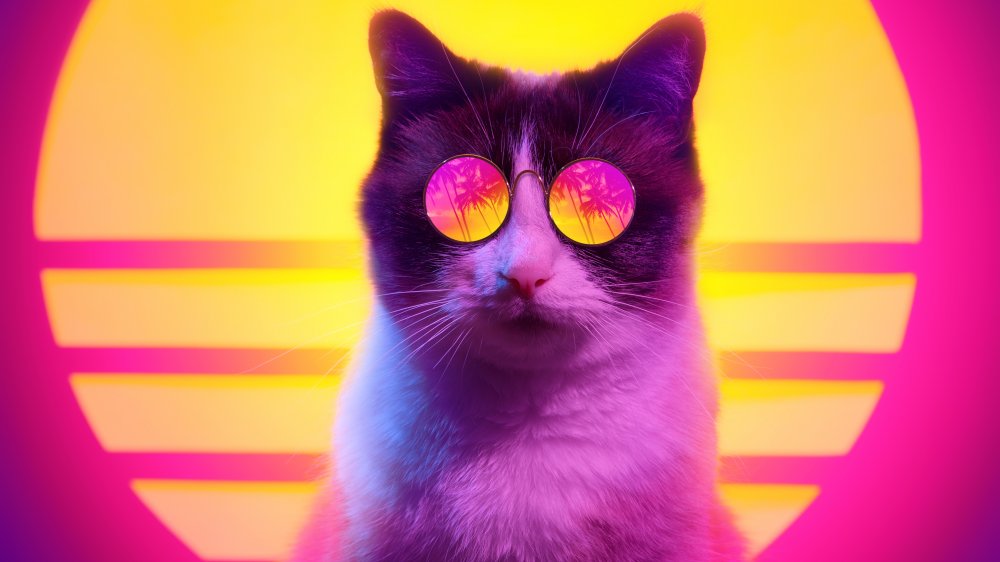What Colors Do Cats Actually See?
Elegant and marble-like, cat eyes have a hypnotic quality to them and do a fantastic job of scaring the bejesus out of unsuspecting people when those peepers creepily glow in the dark. Do cats have haunted heads? If you looked into their eyes at night long enough, would you see the screaming souls of the damned peering back at you? Gizmodo says the glow comes from a layer behind the retina called the tapetum lucidum, which reflects light. That special feature reflects the fact that felines are active at night, which is when they naturally hunt, per Inverse.
So, when a cat's staring through the window at its next victim, what does that soon-to-be dead meat look like to a cat? More broadly, what does the world look like through feline eyes? Do they only see the crimson blood of about-to-be-murdered birds, or is there room for other colors?
The cat's got your tongue, but not your eyes
The band Survivor tells us that the eye of the tiger allows you to see the thrill of the fight and rise up to the challenge of our rivals. And that's great if you're training to fight Mr. T, but what if you have the eye of a tabby? Does every hunk of meat you eat look like a Mr. T-bone steak? It depends on the number of rods and cones in the cat's eyes.
Live Science explains that rod cells show greater sensitivity to low levels of light while cones cells facilitate color vision and function better in brighter light. Cats have six to eight times more rod cells than humans but about 10 times fewer cones. The oval shape of their eyes combines with big corneas and a reflective layer behind the retina to process even more light. Furthermore, the tapetum can alter the wavelengths of light that get taken in.
Felines can more easily see the silhouette of a possible midnight snack moving in the dead of night while you might be better off turning on a flashlight if you have a hankering for mouse meat. However, during the day, human color vision outshines that of a cat's, which can't see as many colors or perceive them as vividly.
Cats can't see the world through rose-colored glasses
Per Animal Planet, a lot of people used to believe felines were colorblind, but it turns out they're just color-bland. Scientists' perceptions of kitty vision changed after they taught domestic cats to differentiate between blue, green, and yellow. They couldn't differentiate red, however, so they'll never see the world through rose-colored glasses. Cats are sensitive to various shades of gray, though. So if you happen to write adult fanfic about Tony the Tiger frosting someone's flakes, as long as you title it Fifty Shades of Grrrrrreat!, it's kind of scientifically accurate.
Life isn't just less colorful for cats — it's also blurrier because cats are nearsighted. As Popular Science describes, an object that a human could see from 100 feet away doesn't come into focus for cats until about 20 feet away. Their perception is sharpest at a 2- or 3-foot distance, according to Animal Planet. Images depicting what felines see are washed out and hazy. By human standards, they appear dull, and make it seem like your cat would need glasses. Too bad they might be blind to the beauty of their own eyes.
Do cats have ultraviolet vision?
While humans can see colors that cats can't, cats might have the capacity to see ultraviolet light. Live Science writes that the visible light spectrum for people ranges from red to violet, and their lenses deflect ultraviolet light. Though, some people who've had their eye lenses removed during cataract surgery or other procedures have claimed to see in ultraviolet if their lenses weren't replaced. Many other species can manage that without having to take a scalpel to the eyeball, but City University London biologist Ron Douglas said, "Nobody ever thought [dogs and cats] could see in ultraviolet, but in fact, they do."
Douglas drew that conclusion after he and fellow researchers analyzed the eye lenses of dead animals that came from zoos, slaughterhouses, labs, or which were donated by veterinarians. All sorts of animals, including hedgehogs, ferrets, reindeer, dogs, and cats had lenses that allowed at least some ultraviolet light to pass through. This may explain why cats seem to spontaneously go insane while appearing to look at absolutely nothing. They can see the things you can't see and don't know to be afraid of.



